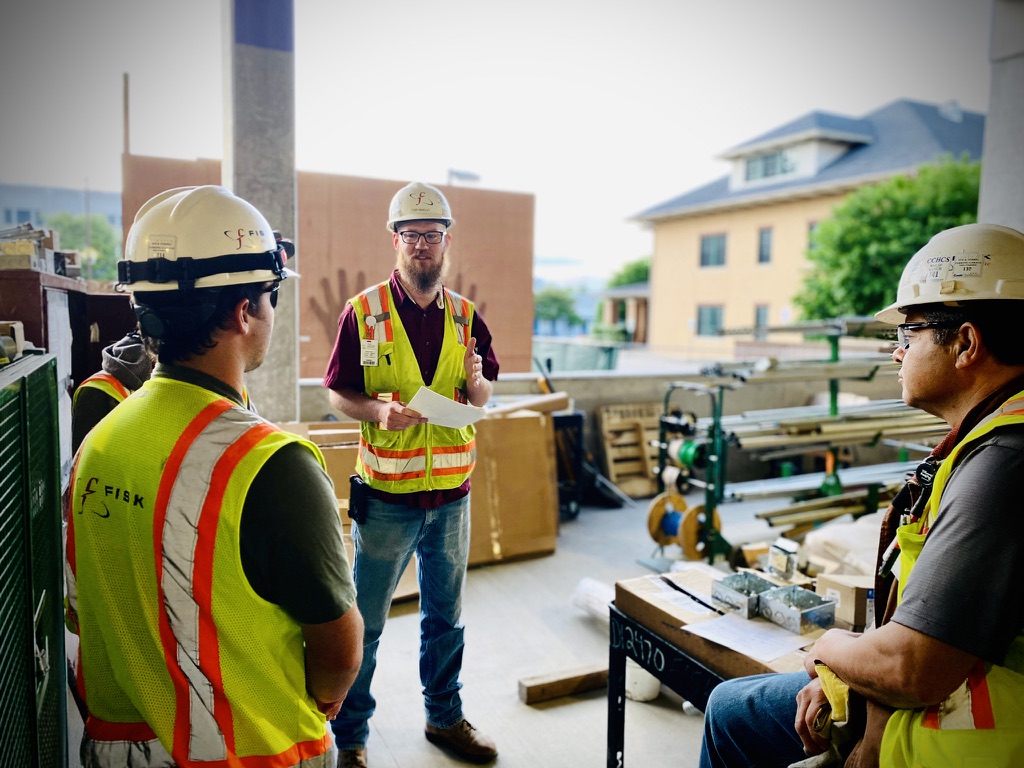Shortly after I was introduced to the concept of Lean Construction, I read the book Two Second Lean by Paul Akers and learned about what he called the 8 forms of waste. These were all straightforward concepts that I could relate to my industry, and I saw right away that there were ways I could improve my projects by reducing these types of waste.
There was one exception however: unused employee genius.
For a long time, I struggled to understand how I could reduce waste through unused employee genius. I convinced myself that this concept meant I needed to somehow tap into previously undiscovered ideas and innovations that my employees might have. I felt like maybe I needed to begin talking through our job tasks in detail with everyone to see if they had any “big ideas” on how we could do our jobs better. One problem, though: as a contractor in a very competitive field, production is very important for us to stay ahead. If my tradespeople and I are standing around discussing how we should do our work, then we are not being productive. While I do highly value input from my people on the tasks that we perform, I also strive to make sure that, when they are ready to begin a project, I already have a plan for how to get it done. I’m also careful to not micromanage every step. This enables people to go straight to work and be productive while also leaving room to take ownership of the task and have pride in what they accomplish.
The Lean Builder
Finally, after reading The Lean Builder, I came to look at unused employee genius from a different perspective. In a conversation between two characters in the book, one superintendent tells the other, “Any time a trade has to address one of the eight wastes instead of focusing on their skilled craft, they are being pulled away from their true potential and the role that brings the most value to the project.” This was a revelation. I realized that the “genius” I was looking for from my employees was not a grand idea or earth-shattering change to our methods—it was something much simpler: their skills and experience. Something that had been right in front of me this whole time.
I realized that it was up to me, as their leader, to do everything I could to ensure that my staff are able to meet their full potential.
I have the privilege to lead IBEW electricians from Local Union 20. As union electricians, we pride ourselves on being some of the best in the industry. Quality is a trait that is deeply engrained in us from early in our careers. Many of my employees have decades of experience to bring to the table. Respecting that knowledge and allowing them to put it to use has opened my eyes to the value of unused employee genius.
Tradespeople Pride & Lean Construction
Tradespeople are proud of what they do for a living, and there is much gratification in building something tangible with your own two hands. It is my job, as a leader, to make sure my employees have what they need to get their job done. Not only does this reduce waste and increase production, it keeps morale high. Making sure that my people have the materials and tools they need means that they do not waste time searching or making multiple trips to our laydown area. Providing them with the correct information with clear and simple directions—while considering the big picture items that involve their tasks as well as the entire project—allows them to work unhindered by questions. And by leaving room in the directions for ownership of a task, they are empowered to make it their own and take pride in seeing it done. This opens opportunity for a person to do what he or she has been trained to do so well, and that is what adds the most value to the project.
All it took was one sentence in The Lean Builder to finally make all the pieces fall into place for me. In an instant, unused employee genius went from a blurry concept that seemed be very idealistic and impractical to one of the most game-changing Lean Construction principles at my disposal.
By: Toby Bradley
General Superintendent, Fisk Electric
Be sure to follow The Lean Builder on LinkedIn.









